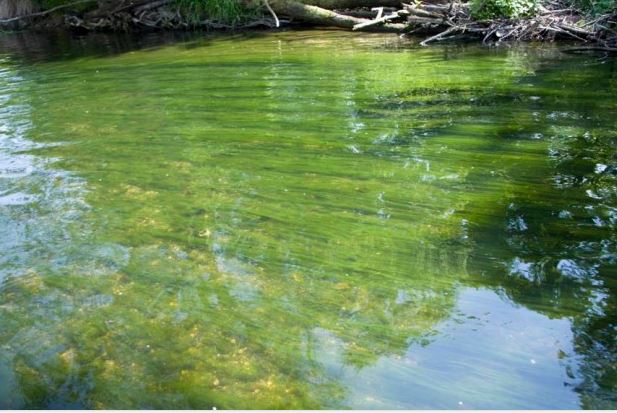
In communities with lakes and ponds, managers need to be vigilant to prevent Cyanobacteria – also known as blue green algae. Algae is a natural component of any lake or pond system. But in more and more communities that include water features, harmful algae blooms (HABs) are increasingly common. Whether naturally occurring or human induced, large concentrations of algae blooms can threaten a lake system’s chemical balance and create conditions that could be toxic to humans or wildlife. Environmental changes or pond nutrient (nitrogen and phosphorus) imbalances in the water can encourage and intensify toxic algae.
Harmful Algae Blooms
Many cyanobacteria blooms, like those appearing in many headlines across New Zealand and Australia, can produce toxins (cyanotoxins) that cause immediate— and sometimes long-term—damage to humans and wildlife alike. Some cyanobacteria are especially toxic for children and pets. Recreational exposure to cyanobacteria can cause skin irritation, as well as “fever, headaches, muscle and joint pain, blisters, stomach cramps, diarrhea, vomiting, mouth ulcers, and other allergic reactions. While research on blue green algae health risks is still ongoing, diseases such as Alzheimer’s, Parkinson’s disease, or cancer may be linked to exposure. Cyanobacteria is particularly lethal for dogs that are exposed by swimming or wading in water that contains algae.
Even though a blue green algae bloom tends to die as quickly as it was produced, harmful conditions can still be present after the bloom is no longer visible. The death process of the bloom consumes large amounts of oxygen within the waterbody, which can be harmful or lethal to birds, fish, and other aquatic animals, among other environmental stresses. The breakdown of the bloom also can cause water discoloration, drinking water contamination, and decreased invertebrate reproduction.
Multiple toxic algae blooms can happen simultaneously depending on the conditions in the pond or lake. And wind or water currents sometimes concentrate a bloom by pushing it to one area of a waterbody. Depending on the size of the lake or pond, this can create exceptionally hazardous or toxic areas.
The smaller or more shallow the pond, the more likely it will be affected by toxic algae.
Not all cyanobacteria produce toxins, but nontoxic blooms can negatively impact the environment and local economies.
Accelerating Algae Growth
Algae growth depends on weather patterns, temperature, and nutrients in the water. While blooms happen naturally, an imbalance of phosphorus and nitrogen, in particular, can accelerate an algal bloom’s growth significantly. Pollutants from construction runoff, fertilised fields and golf courses, stormwater runoff, pet waste, and decomposing leaves, grass clippings, and other organic materials also contribute to nutrient imbalances in the water.
Higher temperatures and increased sunlight in summer months also can encourage algae blooms, as does standing water, which is warmer than circulating water and can act like an incubator— another significant influence.
A lake or pond usually takes on the colour of the algal species within it. Algal blooms often are green or blue-green, although golden-brown algae, or diatoms, are common and can give a lake or pond a brown or cloudy appearance.
Prevention and Treatment
Surface discoloration, fish kills, and “thick, mat-like accumulations on the shoreline and surface” indicate an algal bloom is underway. The water needs to be tested to determine if cyanobacteria is present.
Proactive water quality monitoring can forecast a bloom that’s forming, and additional screening—by a qualified laboratory— can determine if toxins are being produced. Ultimately, it’s best to prevent a bloom from happening than to remediate one that’s already present.
Community managers and association boards can take the following steps to prevent and minimise the risk of a toxic algae bloom:
- Introduce pond aeration and water movement through aerators or fountains.
- Pick up and dispose of pet waste, a common source of excess nutrients and bacteria.
- Implement landscaping strategies that increase groundwater filtration before water enters the pond or lake.
- Incorporate native vegetation, rather than cement banking or manicured lawns, around pond and lake banks. Allow natural vegetation to grow near the water’s edge.
- Use phosphorus-free fertilisers and detergents to limit nutrient-rich runoff.
- Have a pond management professional apply REGEN-Algaemaster, which prevents nutrients from stimulating algae growth, in nutrient-heavy lakes and ponds.
- Practice relative awareness of changing climate and research support.
- Consult a qualified water-management professional who can monitor the water quality regularly and advise appropriate treatments.
